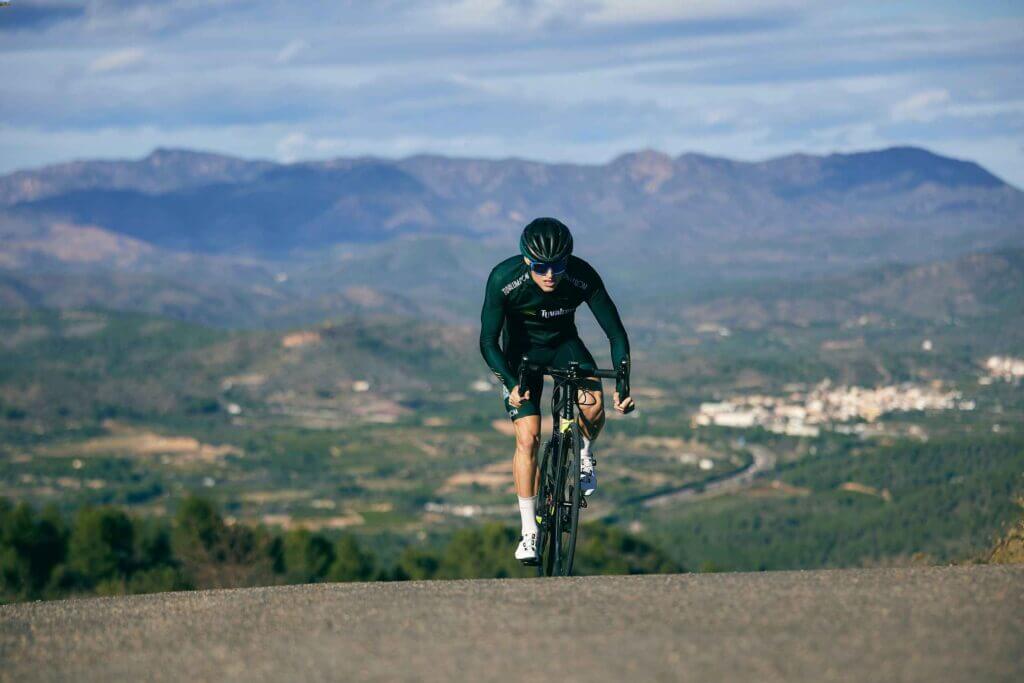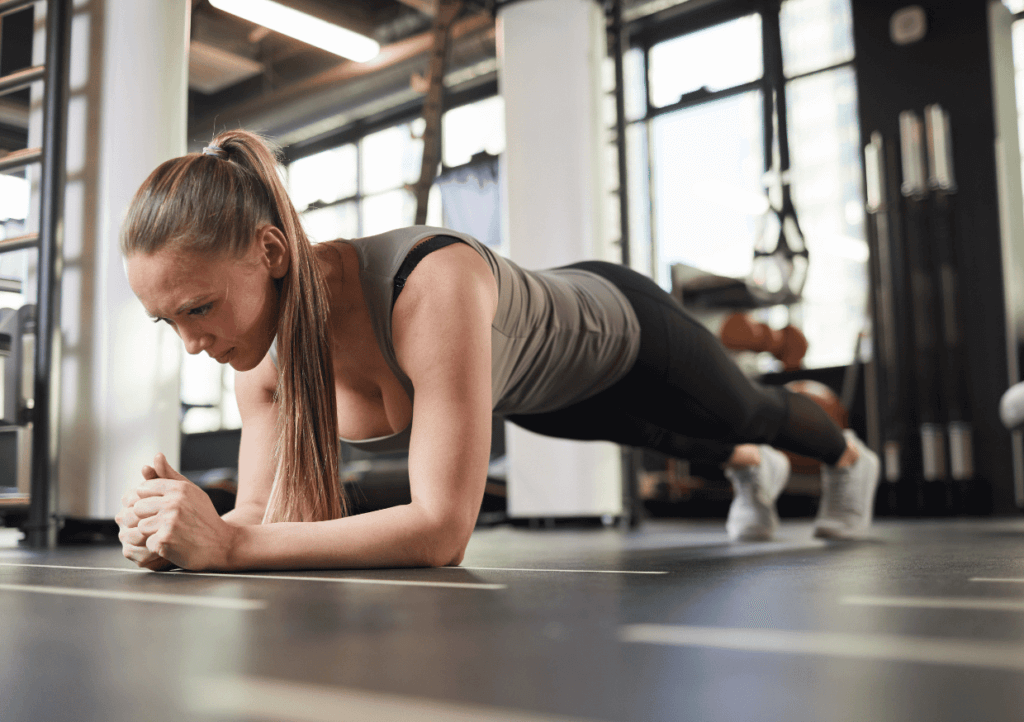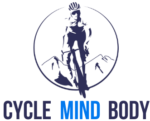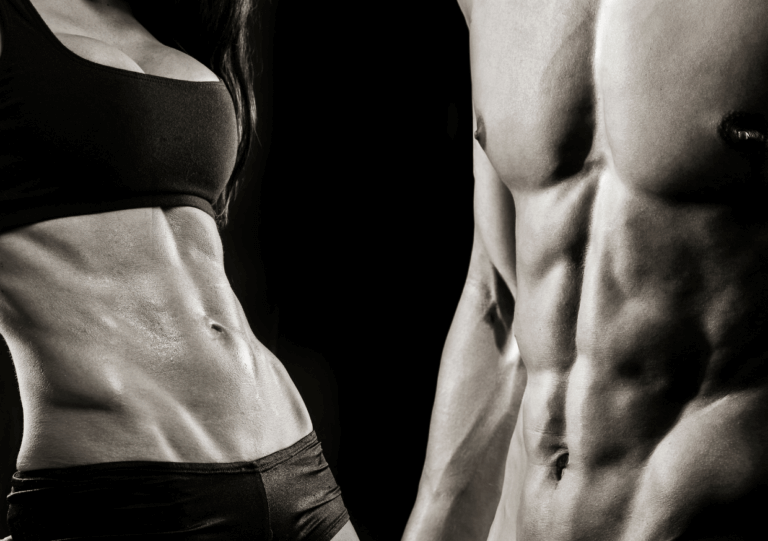Abs have become a universal symbol of fitness and vitality, coveted by many. But does cycling, a popular form of exercise, truly give you those sought-after abs? Let’s delve into the science and misconceptions surrounding this topic.
Does Cycling Give You Abs?

Before we dive into the details, let’s address the burning question: Does cycling give you abs? The short answer is yes, but with some considerations.
Cycling can indeed strengthen your abdominal muscles and contribute to a toned midsection. However, whether you’ll achieve visible six-pack abs solely from cycling depends on various factors, including your body composition, diet, and overall fitness routine.
Now, let’s explore the science behind how cycling impacts your abdominal muscles and what it takes to achieve those chiseled abs you desire.
Understanding Abdominal Muscles

Anatomy 101: The Core Muscles at Play
To understand the impact of cycling on your abs, it’s essential to know which muscles make up the core. The core includes the rectus abdominis, obliques, transverse abdominis, and erector spinae. These muscles work together to provide stability and support during movement.
The rectus abdominis, commonly known as the “six-pack,” is a long muscle that extends vertically along the front of the abdomen. It is responsible for flexing the trunk, such as during sit-ups or crunches.
The obliques, located on the sides of the abdomen, assist in rotational movements and lateral flexion of the spine. The transverse abdominis, often referred to as the body’s natural corset, wraps around the abdomen horizontally and plays a crucial role in stabilizing the spine and pelvis.
Finally, the erector spinae, located along the spine, help maintain an upright posture and provide support during activities like cycling.
Functionality Beyond Aesthetics: The Role of Abdominal Muscles
While defined abs are aesthetically pleasing, their function extends far beyond appearance. Strong abdominal muscles are crucial for maintaining proper posture, stabilizing the spine, and transferring power during cycling.
The core acts as a stabilizing force during cycling, especially when riding in a forward-leaning position. As you pedal, your core muscles engage to stabilize your body and prevent excessive movement, allowing you to generate power efficiently. Additionally, a strong core can help reduce the risk of injury by providing support to the lower back and pelvis, which are vulnerable areas for cyclists.
Dispelling Misconceptions: Abs and Body Fat
Visible abs are often associated with low body fat levels. However, having a visible six-pack doesn’t necessarily indicate superior core strength. It’s possible to have strong abs without them being prominently displayed due to genetic factors and overall body composition.
Body fat percentage plays a significant role in the visibility of abdominal muscles. For men, visible abs typically start to appear when body fat levels drop below 15%, while women may start to see definition at around 20-25% body fat. However, achieving and maintaining low body fat levels requires a combination of proper nutrition, consistent exercise, and genetics.
The Physical Demands of Cycling

Engaging the Core: How Cycling Activates Abdominal Muscles
Cycling involves a repetitive motion that engages the core throughout the entire pedal stroke. As you push down on the pedals, your core muscles contract to stabilize your body and transfer power from your legs to the pedals.
During the downward phase of the pedal stroke, the rectus abdominis and obliques engage to stabilize the pelvis and prevent excessive lateral movement. As you push through the bottom of the pedal stroke, the transverse abdominis contracts to maintain stability and support the spine.
Finally, during the upward phase of the pedal stroke, the erector spinae engage to keep the spine in a neutral position and prevent slouching.
Endurance vs. Strength: The Impact of Cycling on Core Muscles
Long-duration rides and interval training challenge your core muscles in different ways. Endurance rides require sustained core engagement to maintain proper form, while interval training builds strength and power through high-intensity efforts.
Endurance rides, typically lasting more than an hour, require a consistent level of core activation to maintain stability and efficiency. As fatigue sets in, maintaining proper form becomes increasingly challenging, requiring greater core strength and endurance.
Interval training, on the other hand, involves alternating between periods of high-intensity effort and recovery. During intense efforts, such as sprinting or climbing, your core muscles work overtime to generate power and maintain stability.
Incorporating interval training into your cycling routine can help improve both strength and endurance in your core muscles.
Balance and Stability: The Overlooked Benefits for Core Development
Balancing on a bike requires constant adjustments from your core muscles to keep you upright and stable. This continuous engagement helps strengthen your core over time, improving overall stability and control.
Cycling requires more than just leg strength; it demands a high level of balance and coordination. Your core muscles play a crucial role in maintaining stability and controlling your movements on the bike, especially when navigating uneven terrain or making sharp turns.
The Importance of Nutrition and Body Composition

Abs Are Made in the Kitchen: The Role of Nutrition in Revealing Abs
No matter how strong your core muscles are, they won’t be visible if they’re covered by a layer of body fat. Achieving visible abs requires a combination of regular exercise and a balanced diet that promotes fat loss and muscle definition.
When it comes to revealing your abs, diet plays a significant role. Even if you have well-developed abdominal muscles, they may remain hidden beneath a layer of fat if your diet isn’t conducive to fat loss.
To reduce body fat and reveal your abs, focus on creating a calorie deficit by consuming fewer calories than you expend. This can be achieved through a combination of dietary changes and increased physical activity.
Aim to incorporate whole, nutrient-dense foods into your diet, including lean proteins, fruits, vegetables, whole grains, and healthy fats. These foods provide essential nutrients while helping you feel full and satisfied, making it easier to stick to your calorie goals.
Avoid highly processed foods, sugary snacks, and excessive alcohol consumption, as these can contribute to weight gain and hinder fat loss efforts.
Fueling the Machine: Nutrition for Cycling Performance and Physique
Cyclists have unique nutritional needs due to the demands of their sport. Proper fueling before, during, and after rides is essential for optimizing performance and supporting muscle recovery. A diet rich in lean protein, complex carbohydrates, and healthy fats can help fuel your rides while promoting muscle growth and fat loss.
Before a ride, focus on consuming a balanced meal or snack containing carbohydrates for energy and a small amount of protein to support muscle function. During longer rides, replenish your energy stores with easily digestible carbohydrates like sports drinks, energy gels, or snacks such as bananas or energy bars.
After your ride, prioritize post-workout nutrition to refuel your muscles and support recovery. Aim to consume a combination of protein and carbohydrates within 30-60 minutes of completing your ride to help repair muscle tissue and replenish glycogen stores.
Proper hydration is also crucial for both performance and physique. Dehydration can impair exercise performance and hinder recovery, so be sure to drink plenty of fluids before, during, and after your rides. Water is typically sufficient for shorter rides, but for longer or more intense efforts, consider electrolyte-replenishing drinks to replace lost fluids and minerals.
In addition to fueling your rides, pay attention to your overall dietary habits and ensure you’re consuming enough calories to support your training and recovery needs. Underfueling can lead to fatigue, poor performance, and increased risk of injury, so prioritize nourishing your body with adequate nutrients to support your cycling goals.
Striking the Balance: Finding the Right Approach to Nutrition and Training
Finding the right balance between nutrition and training is key to achieving your fitness goals. It’s essential to prioritize overall health and performance over solely aesthetic goals. Focus on fueling your body with nutrient-dense foods that support your cycling endeavors while also enjoying the occasional treat in moderation.
It’s important to remember that visible abs are not necessarily indicative of overall health or fitness. While having a toned midsection can be a desirable goal for many, it’s essential to maintain a balanced approach to nutrition and training to support your overall well-being.
Instead of fixating solely on achieving a specific aesthetic outcome, focus on fueling your body for performance and prioritizing habits that support long-term health and sustainability. This may involve incorporating a variety of foods into your diet, listening to your body’s hunger and fullness cues, and finding joy in physical activity beyond just cycling.
How Cyclists Can Build a Six-Pack

While cycling is renowned for its cardiovascular benefits and lower body strength gains, achieving a visible six-pack requires targeted efforts to strengthen and define the abdominal muscles. Here’s how cyclists can work towards building stronger abs and unlocking that coveted six-pack:
Strength Training: Alongside cycling, incorporating full-body workouts into your routine can help strengthen your core and support overall muscle development.
Exercises like deadlifts, squats, and overhead presses engage multiple muscle groups, including the core, while providing a comprehensive strength-training stimulus.
Exercises like planks, Russian twists, and bicycle crunches target key muscle groups used during cycling, helping you ride stronger and more efficiently.
Planks are a particularly effective exercise for cyclists as they engage multiple muscle groups simultaneously, including the core, shoulders, and glutes. To perform a plank, start in a push-up position with your hands directly beneath your shoulders and your body in a straight line from head to heels. Engage your core muscles and hold this position for as long as possible, aiming to maintain a neutral spine and avoid sagging or arching.
Russian twists are another beneficial exercise for cyclists as they target the obliques, which are important for stabilizing the pelvis and generating power during cycling movements. To perform Russian twists, sit on the floor with your knees bent and your feet flat on the ground. Lean back slightly and lift your feet off the ground, balancing on your sit bones. Hold a weight or medicine ball in front of your chest and rotate your torso from side to side, keeping your core engaged and your back straight.
Bicycle crunches are an excellent exercise for targeting the rectus abdominis, which is responsible for flexing the trunk and stabilizing the pelvis during cycling movements. To perform bicycle crunches, lie on your back with your hands behind your head and your knees bent. Lift your shoulders off the ground and bring your right elbow towards your left knee while simultaneously straightening your right leg. Repeat on the opposite side, alternating sides in a pedaling motion.
Incorporate Standing Climbs: Standing climbs are a powerful way to engage the entire body, including the core, while cycling. During a standing climb, shift your body weight forward slightly and rise out of the saddle, keeping your core engaged to stabilize your body and maintain balance.
Focus on driving your pedals down forcefully while maintaining a smooth and controlled rhythm. Standing climbs not only strengthen the legs but also engage the core and upper body, providing a comprehensive workout for the entire body.
Maintain Proper Nutrition: Building a six-pack isn’t just about training your abs—it also requires maintaining a low body fat percentage to reveal the underlying muscle definition.
Pay attention to your diet and focus on consuming nutrient-dense foods that support muscle growth and fat loss. Consider reducing your overall calorie intake and incorporating more protein, healthy fats, and complex carbohydrates into your meals.
Stay Consistent: Building a six-pack takes time and dedication, so stay consistent with your training and nutrition efforts. Incorporate full-body workouts, specific ab exercises, and standing climbs into your regular routine, and aim to maintain a balanced diet that supports your fitness goals.
By incorporating these strategies into your training regimen, you can strengthen your abs, reduce body fat, and work towards achieving that elusive six-pack. Remember to stay patient and persistent, as building a strong and defined core takes time and consistent effort.

